It’s quite possible that you are working simultaneously on many files and documents together and therefore require to visit them regularly to incorporate changes if any. However, what if right-clicking these items icons in the Taskbar no longer shows Recent items? What do you do then? We’ll look at the solution that will permanently fix the problem for you.
Recent items not showing on Taskbar
To make Recent items show on the taskbar icons in Windows 11/10, you have four options:
- Show Recently opened items via Settings
- Clear the Recent items cache
- Make changes in the Registry
- Using Group Policy Editor
Please note that serious problems might occur if you modify the registry incorrectly. Therefore, make sure that you follow these steps carefully. For added protection, back up the registry before you modify it. Then, you can restore the registry if a problem occurs.
1] Show Recently opened items via Settings
Windows 11
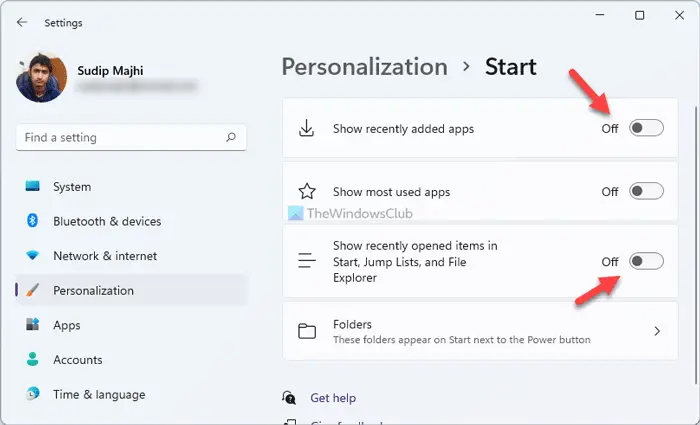
- Press Win+I to open the Windows Settings.
- Go to the Personalization setting.
- Click on the Start option.
- Toggle the Show recently added apps button.
- Toggle the Show recently opened items in Start, Jump Lists, and File Explorer button.
Windows 10
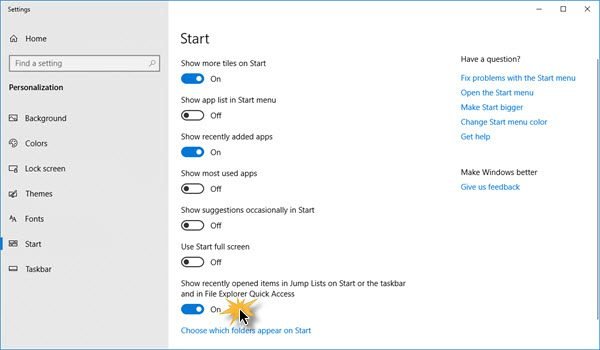
Open Settings > Personalization > Start. Turn On Show recently opened items in Jump lists on Start or the taskbar and in File Explorer Quick Access.
2] Clear the Recent items cache
Launch the File Explorer, copy and paste the link below on the address bar –
%AppData%\Microsoft\windows\recent\automaticdestinations
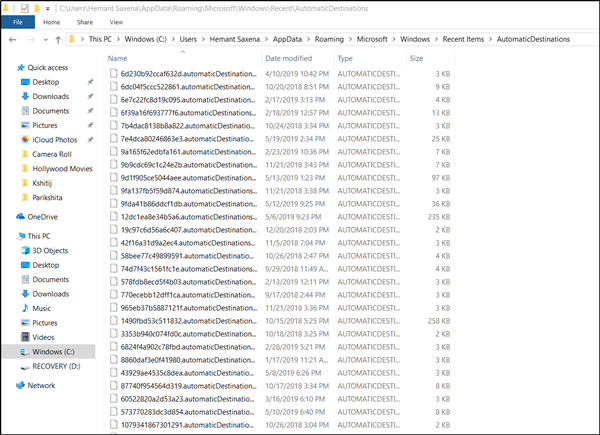
Multiple files should become visible to you. All you have to do is select all of the files and delete them completely.
These files are recreated automatically when a user interacts with the system performing actions like opening applications or accessing files.
Likewise, repeat the same procedure with another location link –
%AppData%\Microsoft\windows\recent\customdestinations
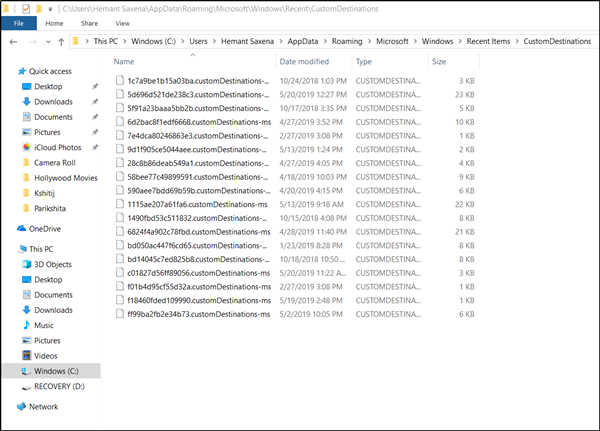
When done, restart your PC and see. The issues should be fixed permanently in Windows.
3] Make changes in the Registry
By default, the system saves a shortcut to each of the non-program files the user most recently opened and displays the shortcuts. These shortcuts let users easily review and restart recently used documents.
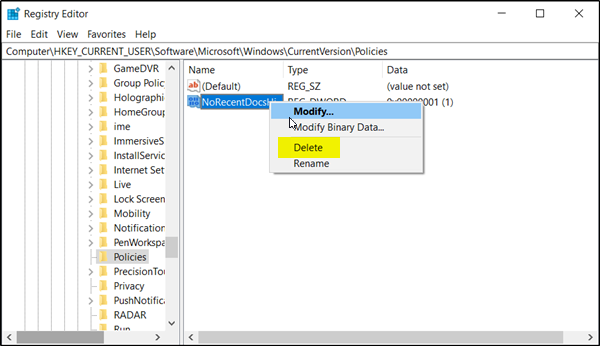
Open the ‘Run’ dialog box by pressing Windows+R key in combination. Next, type ‘regedit.exe’ in the empty field of the box and hit the ‘Enter’ key.
After that, go to the sub-path as given below-
HKEY_CURRENT_USER\Software\Microsoft\Windows\CurrentVersion\
When there, select the Policies Explorer folder from the left pane and move to the right pane.
Locate and right-click on NoRecentDocsHistory entry and delete it.
This entry stores the Group Policy setting for Do not keep the history of recently opened documents.
The Group Policy adds this entry to the registry with a value of 1 when you enable the Do not keep the history of recently opened documents policy.
If you disable the policy by deleting it or setting it to Not configured, Group Policy deletes the entry from the registry, and the system behaves as though the value is 0, i.e., it keeps the history of recent files in Windows.
4] Using Group Policy Editor
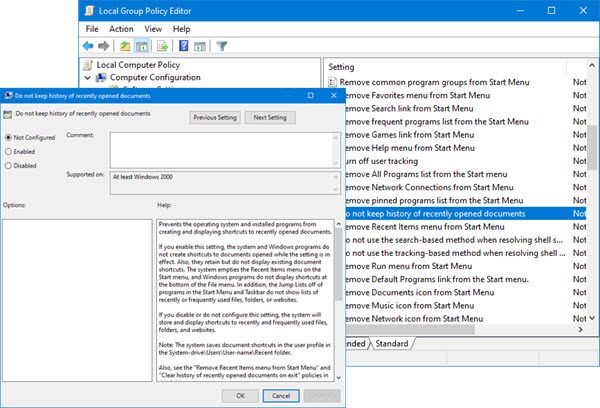
Open Group Policy Editor and navigate to:
User Configuration > Administrative Templates > Start Menu and Taskbar
From the right panel find and double-click on the “Do not keep a history of recently opened documents” policy. This is the policy that lets you enable or disable recent items and frequent places. To enable the recent items and frequent places feature, select “Disabled” or the “Not Configured” option.
When done, the system will store and display shortcuts to recently and frequently used files, folders, and websites.
On the other hand, if you choose to enable this setting, the system and Windows programs will not create shortcuts to documents opened while the setting is in effect. Also, they retain but do not display existing document shortcuts. The system will empty the Recent Items menu on the Start menu, and Windows programs will not display shortcuts at the bottom of the File menu. In addition, the Jump Lists of programs in the Start Menu, and Taskbar do not show lists of recently or frequently used files, folders, or websites.
So, if you enable Recent Items list via Group Policy editor, you should be able to see files listed in the Recent area of your Microsoft Office software.
I hope this helps.
Leave a Reply